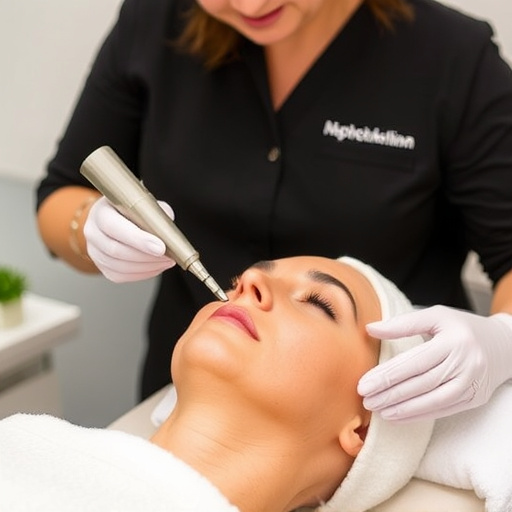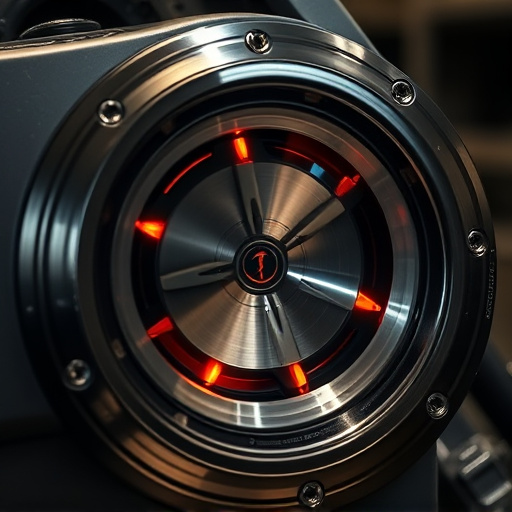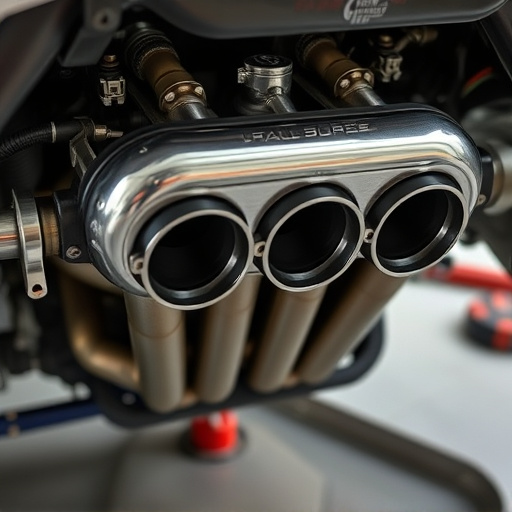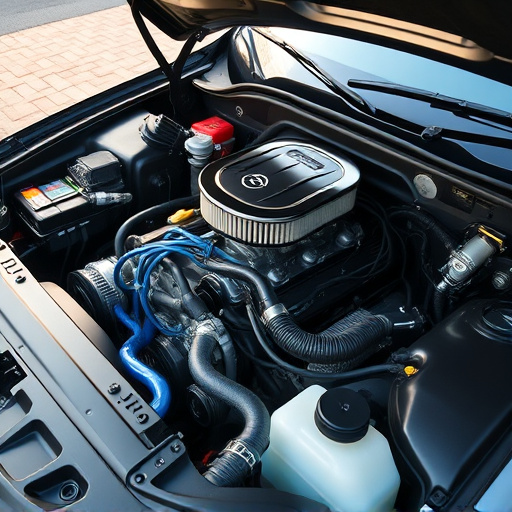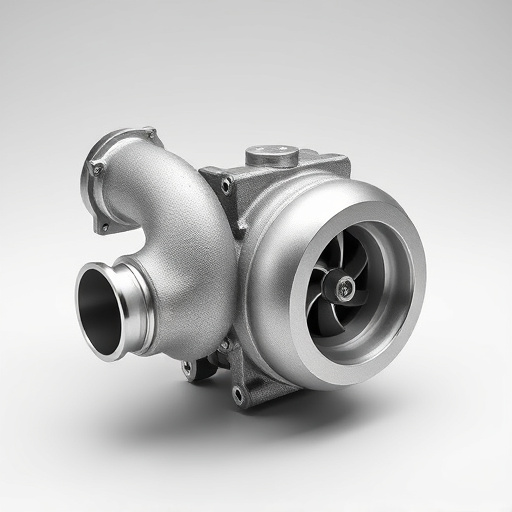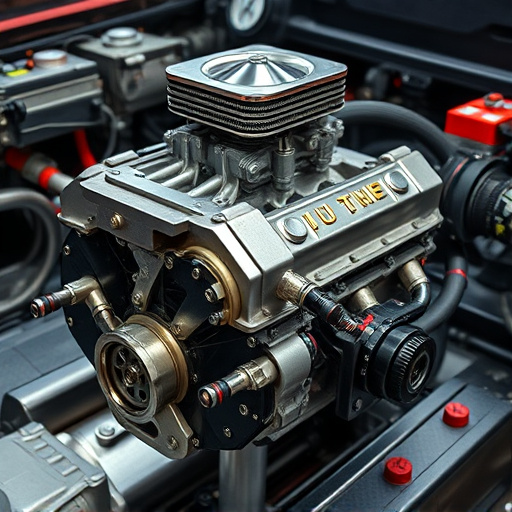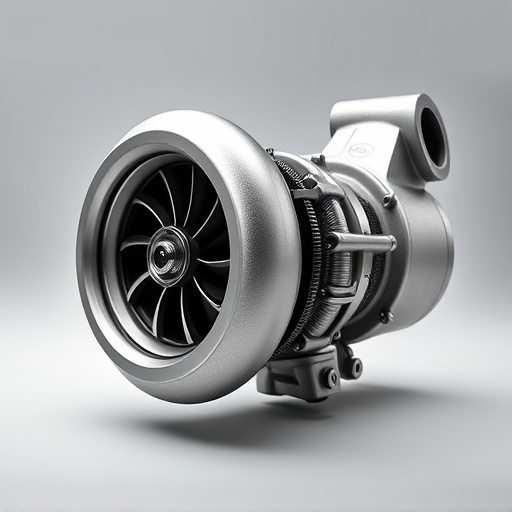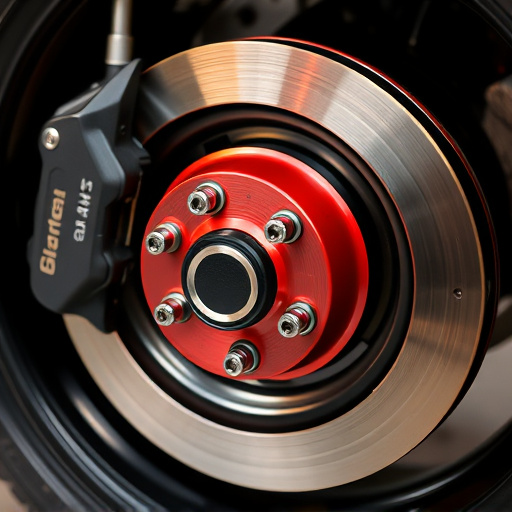Brake pads and rotors are critical for a vehicle's stopping power, converting kinetic energy into heat through friction. High-performance pads can enhance braking but accelerate wear influenced by driving style, hard braking, and environmental factors. Uneven pad wear, caused by rotor warping, misaligned wheels, high mileage, or dirty air intake systems, leads to premature replacement. Regular maintenance, including clean air filters and routine servicing, prevents brake pad and rotor wear. Upgrading to high-performance parts and visual inspections further extend their lifespan, ensuring balanced braking pressure and reducing uneven wear.
Brake pads and rotors are integral components of a vehicle’s braking system, working together to slow down and stop the wheels. However, improper alignment or condition of these parts can lead to uneven brake pad wear. This article delves into the intricate relationship between brake pads and rotors, exploring common causes of uneven wear and offering strategic solutions to prevent and mitigate it. By understanding these factors, drivers can ensure optimal braking performance and longevity for both pads and rotors.
- Understanding Brake Pad and Rotor Interaction
- Common Causes of Uneven Brake Pad Wear
- Strategies to Prevent and Mitigate Brake Pad Wear from Rotors
Understanding Brake Pad and Rotor Interaction
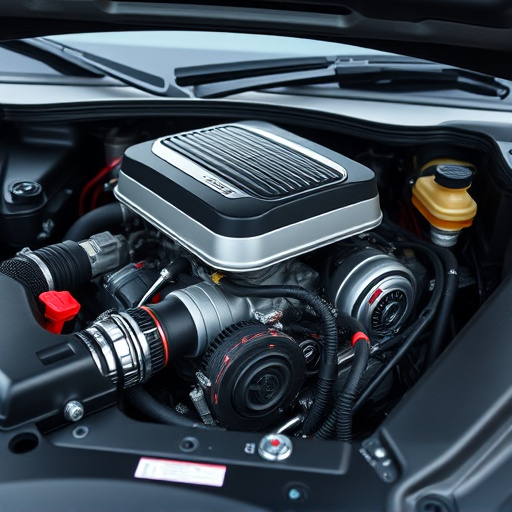
Brake pads and rotors are two integral components of a vehicle’s braking system, working together to slow down or stop the car. The primary interaction occurs when the brake pads press against the rotors, creating friction that converts kinetic energy into heat, thereby slowing down the wheel and, by extension, the entire vehicle. This simple yet crucial process involves precise alignment and even wear between the pads and rotors over time.
High performance parts, including advanced brake pads designed for superior stopping power, can enhance driving dynamics but also accelerate this natural wear and tear. Factors like aggressive driving styles, frequent hard braking, and certain environmental conditions can exacerbate the situation. For instance, a cat back exhaust system, while improving vehicle performance, might not directly impact rotor and pad interaction but could indirectly contribute to increased heat buildup during spirited driving, leading to more rapid brake pad wear over time.
Common Causes of Uneven Brake Pad Wear
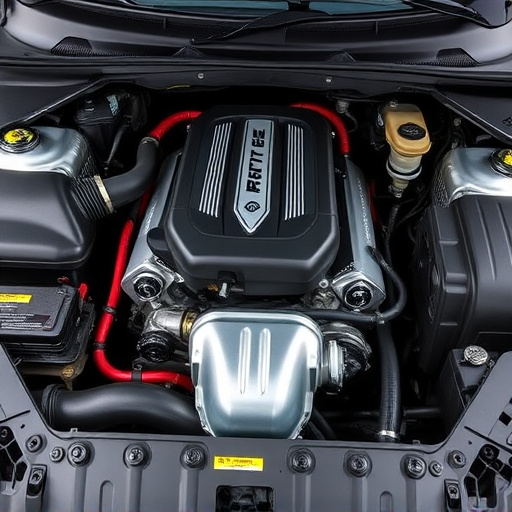
Uneven brake pad wear is a common issue that can lead to premature replacement and suboptimal braking performance. Several factors contribute to this problem, with rotors playing a significant role. One primary cause is rotor warping or deformity, often due to manufacturing defects or excessive heat buildup during braking. Warped rotors can’t maintain even pressure on the brake pads, resulting in uneven wear.
Another major contributor is misaligned or unbalanced wheels. This imbalance creates vibrations that can lead to uneven pad wear, particularly at the outer edge of the pads. Additionally, high-mileage vehicles often experience more severe wear patterns due to increased metal-on-metal contact and reduced padding effect. Improperly maintained air intake systems and performance air filters can also play a role by affecting airflow and temperature regulation around the brakes, indirectly influencing pad wear.
Strategies to Prevent and Mitigate Brake Pad Wear from Rotors
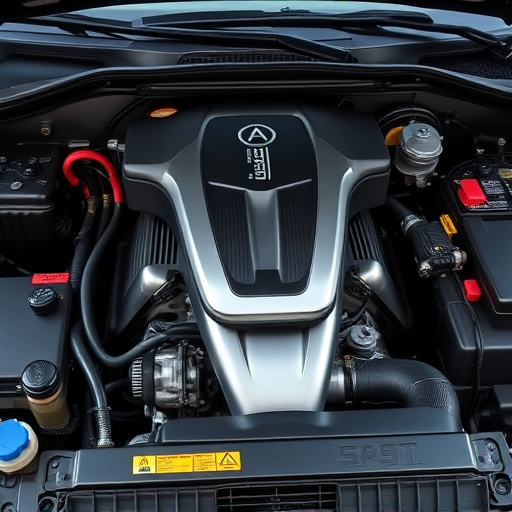
To prevent brake pad wear caused by rotors, regular maintenance is key. One effective strategy is to keep your vehicle’s air filter kits clean and well-maintained. A dirty air filter can restrict airflow, leading to increased friction on the brakes, which in turn accelerates pad wear. Furthermore, ensuring optimal vehicle performance through routine servicing will help maintain balanced brake pressure, reducing the uneven wear that can be caused by poorly maintained rotors.
Investing in high-performance parts is another way to mitigate brake pad wear. Upgrading your rotors and pads to those designed for better heat dissipation and durability can significantly prolong their lifespan. Regularly inspecting your brakes, including visual checks for signs of damage or wear, will also help you catch issues early on. This proactive approach ensures that any problems are addressed before they lead to more severe brake pad wear.
Brake pads and rotors are integral components of a vehicle’s braking system, but their interaction can lead to uneven pad wear. Understanding this dynamic is crucial for maintaining optimal brake performance and longevity. By addressing common causes such as misalignment, contamination, and excessive heat, and implementing strategies like regular rotation, balanced braking, and timely replacement, drivers can significantly reduce brake pad wear stemming from rotors. Investing in these preventative measures not only enhances safety but also promotes the sustainable operation of a vehicle’s brakes over time.




